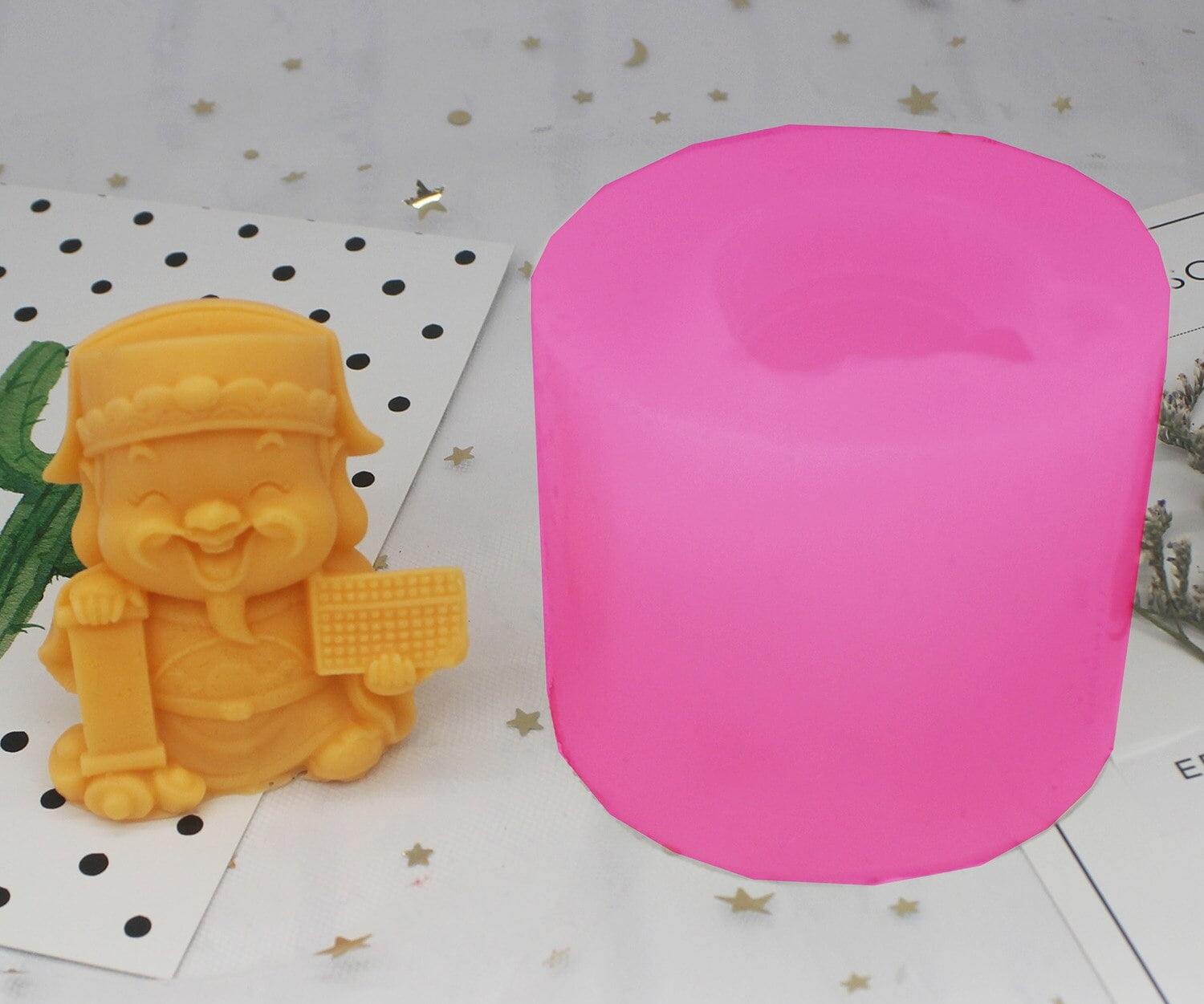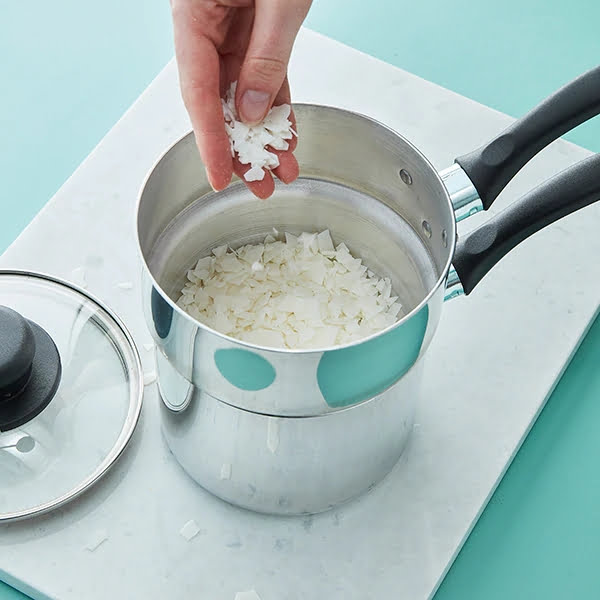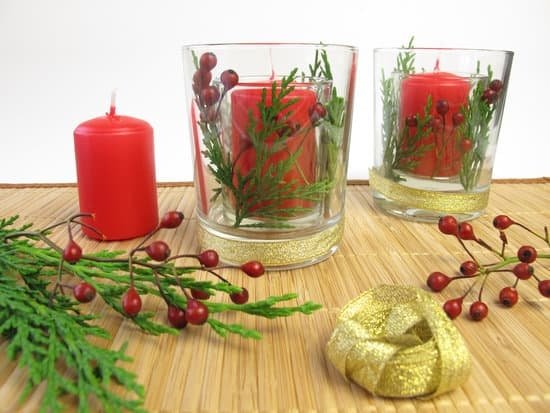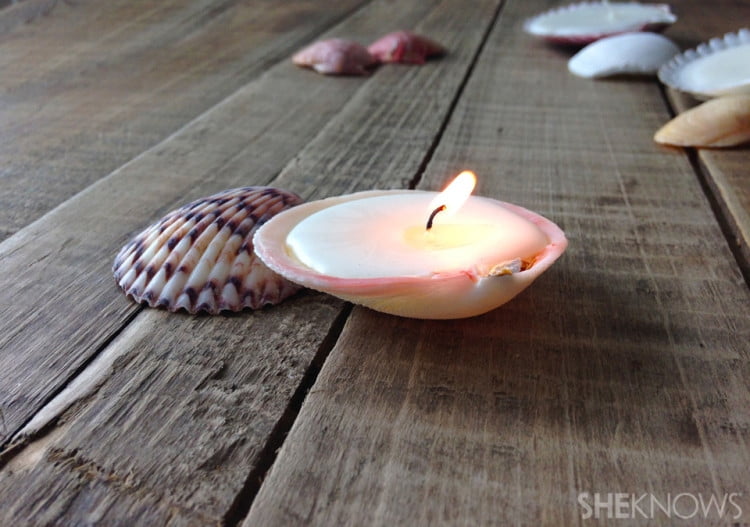The world of candle making is a delightful blend of art and science. Whether you enjoy it as a hobby or create candles for a business, one crucial aspect that cannot be overlooked is the fragrance oil used in the process.
The right amount of fragrance oil can transform an ordinary candle into a sensory experience, captivating the senses and creating a warm and inviting ambiance. In this article, we will explore the importance of fragrance oil in candle making, discover the ideal balance required for optimal scent, and delve into various techniques for measuring and using fragrance oil effectively.
When it comes to candle making, fragrance oil plays a vital role in enhancing the appeal of the finished product. It not only adds a delightful aroma but also sets the mood and atmosphere of the space where the candle will be enjoyed. The right blend of fragrances can transport you to far-off places or evoke cherished memories, making candles much more than just decorative pieces.
Achieving the perfect balance in scent requires careful consideration of various factors, such as candle size, type, desired intensity, and strength of the fragrance oil itself. These factors should be taken into account when determining how much fragrance oil to use in each batch of candles. A well-balanced scent ensures that your candles are not overpowering or too subtle but instead provide a pleasant and enjoyable aroma that lingers throughout any room.
Join us on this olfactory journey as we unravel the mysteries behind fragrance oil usage in candle making. From understanding dilution ratios to measuring by weight or volume, we will equip you with all the knowledge you need to achieve consistent results with your favorite scents. Alongside practical tips and guidelines for safe usage rates, we will also explore common mistakes to avoid and uncover personalization techniques for tailor-made scent experiences.
So, grab your apron, gather your supplies, and let’s delve into the fascinating world where artistry meets aromatherapy in candle making – starting with why fragrance oil matters more than you may have ever realized.
Understanding Fragrance Oil Dilution Ratios
When it comes to candle making, the amount of fragrance oil used plays a crucial role in determining the final scent and appeal of the candles. Understanding fragrance oil dilution ratios is essential for achieving safe and effective results.
Different types of fragrance oils have specific dilution ratios that should be followed to ensure optimal performance. Essential oils usually require a lower dilution ratio compared to synthetic fragrance oils. Beginners should always consult the supplier’s guidelines or product labels for recommended usage rates.
To achieve a balanced and harmonious scent, it is important to follow proper dilution ratios when using fragrance oils in candle making. Using too little fragrance oil may result in a weak scent throw, while using too much can lead to overpowering or unpleasant aromas.
| Type of Fragrance Oils | Dilution Ratio |
|---|---|
| Essential Oils | Up to 5% (20 drops per ounce) |
| Synthetic Fragrance Oils | Up to 10% (40 drops per ounce) |
It is worth noting that some fragrance oils may have specific usage restrictions due to their potency or potential for skin irritation. These limitations are typically stated by the supplier and should be carefully followed for safety purposes.
As beginners gain more experience in candle making, they can experiment with different fragrance oil dilution ratios to achieve their desired level of scent intensity. However, it is always recommended to start with lower amounts and gradually increase if needed, rather than beginning with excessive amounts that cannot be easily reduced.
By understanding and following proper dilution ratios, candle makers can create candles with captivating scents that enhance the atmosphere and delight the senses.
Factors to Consider When Determining Fragrance Oil Quantity
The amount of fragrance oil used in candle making is a crucial factor that can greatly impact the final product. Determining the right quantity of fragrance oil to use involves considering several factors to ensure the desired scent intensity and overall quality of the candle.
Firstly, the type and size of the candle being made play a significant role in determining the fragrance oil quantity. Larger candles typically require more fragrance oil compared to smaller ones, as they need a stronger scent throw to fill a larger space. Additionally, different types of candles may have different requirements for fragrance oil due to variations in wax types and burn characteristics.
Another important consideration is the strength of the fragrance oil itself. Fragrance oils come in different strengths, with some being more concentrated than others. It’s essential to read and follow the manufacturer’s guidelines for each specific fragrance oil to determine the appropriate amount to use for optimal results.
Lastly, the desired scent intensity for the candle should be taken into account when deciding on the amount of fragrance oil. Some individuals prefer a subtle or mild scent, while others may enjoy a stronger or more intense aroma. Adjusting the quantity of fragrance oil based on personal preference allows for customization and ensures that each candle created meets individual tastes.
Taking these factors into consideration will help determine an appropriate quantity of fragrance oil for each candle-making project. It is always recommended to start with smaller amounts and gradually increase if necessary, as using too much fragrance oil can result in an overpowering or unpleasant scent. Keeping track of measurements and experimenting with different quantities will enable candle makers to find their perfect balance and create exquisite scents that enhance their candles’ appeal.
| Type/Size | Recommended Fragrance Oil Quantity (per pound of wax) |
|---|---|
| Container Candles | 6-10% |
| Pillar Candles | 3-6% |
| Votive Candles | 5-8% |
Measuring Fragrance Oil by Weight
When it comes to candle making, accuracy is key, especially when measuring fragrance oil. Measuring fragrance oil by weight is one of the most precise methods you can use to ensure consistent and successful results. By following a few simple steps, you can accurately measure your fragrance oil and avoid any potential spills or waste.
To begin, you will need a digital scale that measures in grams or ounces. This type of scale provides the most accurate measurements compared to other scales. Start by placing your container on the scale and zeroing out the weight. Then, add your desired amount of fragrance oil directly into the container until you reach the desired weight. Be sure to pour slowly and steadily to prevent any spills or accidents.
It’s worth noting that some fragrance oils may be thicker or more viscous than others, which can affect their weight measurement. To address this issue, you may consider slightly warming up these fragrance oils before measuring them to make pouring easier and more accurate.
Using a digital scale not only ensures precise measurements but also allows for reproducibility in your candle making process. This means that you can recreate your favorite scents consistently and avoid any discrepancies in scent intensity from one batch to another.
Measuring Fragrance Oil by Volume
When it comes to measuring fragrance oil for candle making, there are different methods you can use. One common method is measuring by volume, using teaspoons, tablespoons, or milliliters. This method is great for those who prefer not to use a digital scale or for beginners who are just starting out with candle making.
To measure fragrance oil by volume, start by ensuring that you have the appropriate measuring tools. Teaspoons and tablespoons are often readily available in most kitchens, while milliliter measurement spoons can be purchased at kitchenware stores or online. It’s important to note that the specific measurement spoons may slightly vary in size depending on the brand, so it’s a good practice to keep all your equipment consistent.
If your fragrance oil bottle has an orifice reducer (a small plastic insert), remove it before pouring the fragrance oil into your measuring spoon. This will allow for easier pouring and accurate measurements. Carefully pour the fragrance oil into the spoon until it reaches the desired volume. Be sure to pour slowly and avoid any spills or overpouring.
For consistency in measurements, it’s helpful to use conversion charts when working with different units of measurement. These charts provide the equivalent volumes for teaspoons, tablespoons, and milliliters, allowing you to easily convert from one unit of measurement to another.
It’s worth mentioning that while measuring fragrance oil by volume is convenient and widely used, it may not always provide as precise measurements as weighing by grams or ounces. However, as long as you’re consistent with your measurements each time you make candles, you should be able to achieve consistent results in terms of scent throw and overall performance of your candles.
Recommended Usage Rates for Different Candle Types
When it comes to candle making, different types of candles require varying amounts of fragrance oil to achieve the desired scent intensity. Understanding the recommended usage rates for different candle types is crucial for creating candles that not only look beautiful but also smell amazing. Here are some guidelines on how much fragrance oil to use for different candle types:
Container Candles
For container candles, it is generally recommended to use around 6% to 10% fragrance oil per pound of wax. This means that if you are using one pound of wax, you will need approximately 0.96 to 1.92 ounces of fragrance oil. It is important to note that using too little fragrance oil may result in a weak scent throw, while using too much can overpower the candle and cause issues with the burn performance.
Pillar Candles
Pillar candles have a larger surface area compared to container candles, which means they require a higher concentration of fragrance oil for a noticeable scent throw. The recommended usage rate for pillar candles is generally between 8% to 12% fragrance oil per pound of wax. This translates to approximately 1.28 to 2.4 ounces of fragrance oil per pound of wax.
Votive Candles
Votive candles are small and typically burn for a shorter period of time than container or pillar candles. Due to their size and burn time, it is recommended to use around 10% to 12% fragrance oil per pound of wax for votive candles. This equates to approximately 1.6 to 2.4 ounces of fragrance oil per pound of wax.
It’s important to keep in mind that these recommended usage rates serve as general guidelines, and it’s always advisable to check with the specific manufacturer or supplier for any additional recommendations or restrictions regarding their fragrances.
By following these recommended usage rates, you can ensure that your candles have the perfect balance of fragrance oil, creating a delightful sensory experience for anyone who lights them. Remember to always test your candles after they have cured to assess the scent throw and make any necessary adjustments. Additionally, don’t be afraid to experiment with different fragrances and quantities to find your own signature scents that truly reflect your personal style and creativity.
Tailoring Fragrance Oil Amounts to Personal Preferences
Adjusting Fragrance Oil Quantities
Every candle maker has unique preferences when it comes to the scent intensity of their candles. Some individuals prefer a strong and bold fragrance, while others opt for a more delicate and subtle aroma. The great news is that you can tailor the amount of fragrance oil used in your candles to achieve your desired scent profile.
To adjust the fragrance oil quantity, start by using the recommended usage rates provided by reputable suppliers as a baseline. These rates are typically expressed as a percentage of the total wax weight or volume. For example, a supplier might recommend using 6-10% fragrance oil for container candles.
If you desire a stronger scent, you can increase the fragrance oil percentage within safe limits. However, it’s essential to keep in mind that increasing the amount of fragrance oil beyond recommended levels can have consequences such as poor burn performance and increased risk of sooting.
On the other hand, if you prefer a milder scent, you can decrease the amount of fragrance oil used. This adjustment may be appropriate for those with sensitivities or for candles intended for use in smaller spaces like bathrooms or bedrooms.
Layering Multiple Fragrance Oils
Another way to tailor fragrance oil amounts to personal preferences is by layering multiple scents. This technique allows candle makers to create unique and complex fragrances that cannot be achieved with a single scent alone.
When layering multiple fragrance oils, start with small quantities of each scent and gradually increase or decrease based on personal preferences. Keep track of the ratios used for future reference.
It’s important to note that not all fragrances will blend well together, so it’s recommended to consult fragrance reviews or do small test batches before committing to larger productions.
Whether adjusting the amount of a single fragrance oil or layering different scents together, it’s crucial to keep meticulous notes on quantities used and any modifications made during the candle making process. This record-keeping will help you recreate successful recipes and avoid repeating any unsuccessful experiments.
By tailoring fragrance oil amounts to personal preferences, candle makers can create candles that reflect their unique style and desired scent profile. The possibilities are endless, and the result is a truly personalized candle that enhances any space.
Common Mistakes to Avoid When Using Fragrance Oil
When using fragrance oil in candle making, it is important to avoid common mistakes that can affect the quality and scent throw of your candles. By being mindful of these mistakes, you can ensure a successful and enjoyable candle making experience.
- Overusing fragrance oil: One common mistake that beginners often make is using too much fragrance oil in their candles. While a strong scent may seem desirable, using an excessive amount of fragrance oil can lead to issues such as poor burning performance, an overpowering or unpleasant scent, and even potential safety hazards. To avoid overusing fragrance oil, it is crucial to follow recommended usage rates provided by the manufacturer for specific types of candles.
- Underusing fragrance oil: On the other hand, underusing fragrance oil can result in a weak or barely noticeable scent throw in your candles. It can be disappointing to spend time and effort on creating candles only to find that they hardly emit any fragrance when lit. To prevent this issue, it is important to measure the fragrance oil accurately according to the recommended usage rates for your candle type.
- Considering allergies and sensitivities: Fragrance oils contain various chemical compounds that can potentially trigger allergies or sensitivities in some individuals. It is essential to be aware of any known allergies or sensitivities among yourself or potential recipients of your candles. If you or someone you know has sensitivities, consider using fragrance oils labeled as skin-safe or hypoallergenic and performing a patch test before use.
By avoiding these common mistakes when using fragrance oil in candle making, you can achieve optimal scent throw and overall candle quality. Remember to always follow guidelines provided by manufacturers and prioritize safety when working with fragrances.
Final Tips for Successful Fragrance Oil Usage in Candle Making
In order to achieve the best results in candle making, it is crucial to understand how to use fragrance oil effectively. Here are some final tips that can help ensure success when it comes to fragrance oil usage.
First and foremost, proper storage of fragrance oils is essential. It is important to keep them in a cool, dark place away from direct sunlight and extreme temperatures. This will help maintain the quality and integrity of the fragrance over time.
Additionally, keeping detailed records of fragrance oil measurements and experiments can be extremely helpful. By documenting the amount of fragrance oil used in each batch of candles and noting any modifications or adjustments made, you can track your progress and reproduce successful results consistently.
Furthermore, it is recommended to experiment with different fragrance oils to discover personal favorites and create signature scents. Don’t be afraid to mix and match different fragrances to create unique combinations. Remember that candle making is an art form, and by exploring various scent combinations, you can truly make your candles stand out.
To conclude, striking the perfect balance of fragrance oil in candle making requires practice, experimentation, and attention to detail. By following these final tips and taking the time to understand the nuances of fragrance oil usage, you can enhance the beauty and appeal of your candles while creating delightful experiences for yourself and others. Share your experiences and tips in the comments section below – we would love to hear about your journey with fragrance oils.
Conclusion
In conclusion, finding the perfect balance of fragrance oil in candle making is crucial for creating candles that not only look beautiful but also smell amazing. Throughout this article, we have discussed the importance of fragrance oil in enhancing the appeal of candles and how the right amount can create a perfect balance in scent.
Understanding fragrance oil dilution ratios is essential for safe and effective usage. Beginners should always follow the guidelines recommended by suppliers to prevent overpowering scents or wasting fragrance oil. Factors such as the type and size of the candle being made, the strength of the fragrance oil, and the desired scent intensity should be considered when determining fragrance oil quantity.
Accurate measurement of fragrance oil by weight or volume is crucial for consistent results. Using a digital scale ensures precise measurements, while following conversion charts helps maintain consistency across different units of measurement. It is important to avoid spills and waste during the measuring process to make the most out of each batch of fragrance oil.
Tailoring fragrance oil amounts to personal preferences allows for customization and experimentation. Whether someone prefers a stronger or milder scent, adjusting fragrance oil quantities can help achieve desired results. Layering multiple fragrance oils opens up endless possibilities for creating unique candle scents that reflect individual tastes.
To ensure successful usage of fragrance oils in candle making, it is important to avoid common mistakes such as overusing or underusing them. Overuse can lead to overpowering scents that are unpleasant, while underuse may result in weak scent throws that disappoint customers. Additionally, it is important to be aware of potential allergies or sensitivities associated with certain fragrance oils.

Welcome to my candle making blog! In this blog, I will be sharing my tips and tricks for making candles. I will also be sharing some of my favorite recipes.





